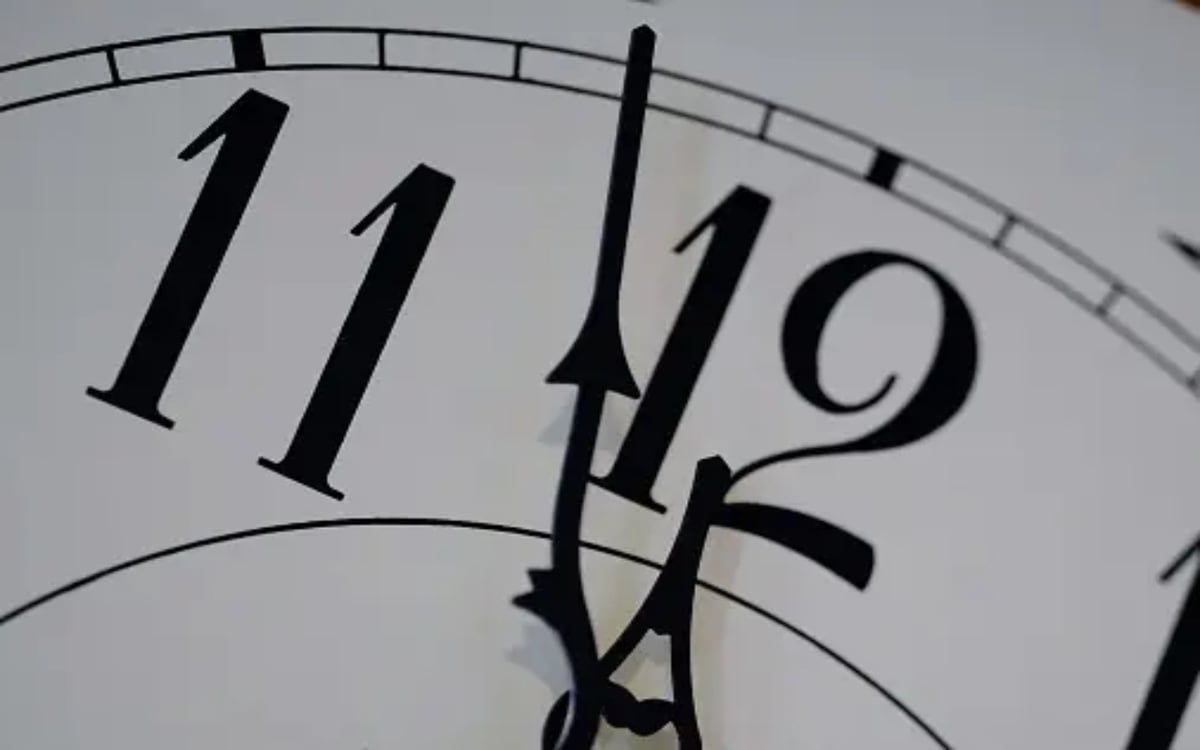(Rumtin Sepaspur, Australian National University)
Canberra, Presented by the Bulletin of the Atomic Scientists, Doomsday Clock is a visual metaphor of humanity’s proximity to disaster. It measures our collective danger in minutes and seconds until midnight, and we don’t want to strike 12. In 2023, the expert group set the clock back to 90 seconds closest to midnight. On January 23, 2024, the Doomsday Clock was unveiled again, revealing the hands to be in the same precarious position. No change can bring a sigh of relief. But it also points to the continuing threat of disaster. The question is, how close are we to disaster? And if so, why?

Atomic bomb invented in 1945
Destroyer of the World The invention of the atomic bomb in 1945 ushered in a new era:
For the first time, humanity had the ability to kill itself. Later that year, Albert Einstein met J. Along with Robert Oppenheimer and other scientists of the Manhattan Project, he founded the Bulletin of the Atomic Scientists, hoping to inform the public about the new nuclear age and the danger it posed. Two years later, the Bulletin, as it became known, published its first magazine. And on the cover was a clock, whose minute hand hung strangely just seven minutes before midnight. Artist Martil Langsdorf tried to convey the sense of urgency felt by the scientists working on the bomb, including her physicist husband, Alexander. Thereafter, Bulletin editor Eugene Rabinovitch determined the location of the clock’s hands until his death in 1973, when a board of experts took over. The clock has since been rotated 25 times, particularly in response to military buildup, technological advancements, and the ups and downs of geopolitical dynamics during the Cold War.
Nuclear threat did not reduce after the fall of the Soviet Union

Even though the total number of nuclear weapons has decreased, new threats have emerged that pose a devastating threat to humanity. The latest setting of the watch attempts to remedy this level of risk. An Uncertain World In the words of Rachel Bronson, President and Chief Executive of Bulletin: Make no mistake:
Resetting the clocks 90 seconds from midnight is not a sign that the world is standing still, in fact quite the opposite. The bulletin cited four major sources of risk: Nuclear weapons, climate change, biological threats, and advances in artificial intelligence (AI).
Two ongoing conflicts – Russia and Ukraine, and Israel and Palestine – involve nuclear-armed states. Long-standing efforts at nuclear stability, such as the new Strategic Arms Reduction Treaty between the US and Russia, appear to be barely materializing. Have been.
North Korea and Iran maintain their nuclear ambitions, and China is rapidly expanding and modernizing its nuclear arsenal. The effects of climate change are getting worse, as the world experiences its hottest years on record.
The limits of six of the nine planets are beyond their safe levels. And we are likely to fall short of the target set by the Paris climate agreement – to limit temperature rise to no more than 1.5 degrees Celsius above pre-industrial levels. Dramatic climate disruption is a real possibility.
The Covid pandemic revealed the global effects of biological threats. Engineered pandemics, created using synthetic bioengineering (and perhaps soon aided by AI tools), may be more virulent and deadly than any natural disease. This challenge, coupled with the continued presence of biological weapons programs around the world and changing disease risks and biothreats due to the effects of climate change, will be a regular battleground for many countries.
Ultimately, the Bulletin recognized the risks that come with progress in AI. While some AI experts have raised the possibility of AI being an existential threat, AI is also a threat multiplier for nuclear or biological weapons. And AI can be a vulnerability multiplier. Through AI-enabled disinformation, democracies may have difficulty functioning, especially when dealing with other destructive threats. Subjective and vague, but does it matter?
What does “90 seconds before midnight” really mean?
Doomsday Clock has its critics. Critics argue that the clock’s setting is based on subjective judgments, not on a quantitative or transparent methodology. What’s more, it is not an accurate measurement. What does “90 seconds before midnight” actually mean? Since the clock is now at its highest level, it naturally begs the question, how long will it take to get more than 90 seconds closer to midnight? Fundamentally, these criticisms are accurate. And there are many ways in which the watch can be improved technically. The Bulletin should consider them. But critics also fail to understand the issue. Doomsday is not a risk assessment. It’s a metaphor. It is a symbol. Gives birth to emotion.
A powerful image of vague threats
A powerful image of shadowy dangers From the outset, “friendly to the eyes” as the clocks struck seven minutes away from midnight, the watch was an emotional and visceral response to the nuclear moment. That is why it has become a powerful image, which attracts the world’s attention every year. Global cataclysmic threats are vague, complex, and overwhelming.With only four points and two hands, the Doomsday Clock conveys a sense of urgency like few images.

